
Changing times for fundraising: Five nonprofit leaders weigh in
As Maine nonprofits get back to in-person fundraising that was put on hold during the pandemic, they are stepping up efforts to be more impactful and connect with donors in new and more powerful ways. Here’s the lowdown from five nonprofit leaders.
Mara Robinov-Moorhead, CEO of Girl Scouts of Maine

Mainebiz: How has your organization’s approach to fundraising changed during or because of the pandemic?
Mara Robinov-Moorhead: During the height of COVID, we did smaller Zoom meetings and more individual calls with donors. Rather than seeking event sponsorships, we had conversations with companies about building partnerships and relationships. There does seem to be an interest in getting back to events, but we have seen a change with the type of events people are looking to attend. It seems donors are more interested in getting together on a smaller scale where they can really reconnect with people. I think the days of the big, fancy galas might be behind us.
MB: To what extent did Girl Scouts of Maine step up fundraising during the pandemic, and how do you keep that momentum going?
MR-M: We had the opportunity during the pandemic to concentrate a little more on building stronger relationships with some of our longtime donors. This resulted in a significant gift for us. Shifting resources from events will allow us to continue to build those connections and grow our donor base. Everyone stepped up, as Girl Scouts do, to support our local healthcare workers, first responders, and educators during the pandemic. As a council, Girl Scouts of Maine donated over 12,000 boxes of cookies to Northern Light employees in Portland and Bangor. Girls and troops also contributed using their funds earned from the product program to buy materials and sew masks, purchase personal care and other items to distribute them to other nonprofits in their communities. They helped animal shelters with food and other items, found unique ways to correspond with and visit nursing home residents who could not see families. And, of course, they donated cookies from their own supplies.
MB: How much did Girl Scouts of Maine raise last year, and how did that compare to pre-pandemic? And this year’s fundraising target?
MR-M: Our annual fund has been relatively stable the past two years. However, we lost close to $100,000 in event revenue due to the pandemic. I would like to see us double our annual giving and corporate support over the next two years.
MB: Any new or upcoming fundraising initiatives planned for 2022?
MR-M: Everyone is reimagining events post-COVID. We will continue with our Pearls of Wisdom annual event in Bangor and are planning a new event in the Portland area for spring/summer 2023. Girls Scouts of Maine has four beautiful camp properties. We operate camps during the summer and continue to develop programs to utilize those facilities year-round to generate revenue.
Matt Donahue, Chief Impact Officer of Heart of Maine United Way

Mainebiz: How has your organization’s approach to fundraising changed during or because of the pandemic?
Matt Donahue: The most significant difference since the pandemic started has been less in person time with businesses and donors. The combination of less employees to speak with and precautions being taken at businesses has limited that contact. However, the pandemic has also increased the visibility of the needs in the community. People are more aware of how delicate a neighbor’s economic situation can be, and how making a gift can help relieve the pressure for a struggling family.
MB: To what extent did your organization step up fundraising during the pandemic, and how do you keep that momentum going?
MD: Very early in the pandemic, our United Way coordinated a telethon to help raise funds for nonprofits. These gifts, totaling more than $300,000 locally, went to nonprofits that needed funds to continue safely serving Mainers in need during the pandemic. The past couple of years has displayed, yet again, how supportive our state is, as well as the resiliency of our nonprofits as they provide their vital services.
MB: What can you share about plans for the $2.2 million investment to support local nonprofits?
MD: We are thrilled to support our communities through this significant investment of $2.2 million over the next three years. Multi-year funding is critical to helping our nonprofit partners implement their programs, and generate lasting results. Tens of thousands of our neighbors will be safer, have shelter and food, receive the treatment they need, and grow and develop during their formative years because of these donor-funded grants.
MB: Any new or upcoming fundraising initiatives planned for 2022?
MD: We are continuing our efforts to raise funds that support our initiatives and the work of our nonprofit partners. We’re actively reconnecting with our supporters and are excited to have more in-person events. The just launched Hopeful Campaign suggests existing donors increase their gift by 8.5%, to celebrate our 85th anniversary.
Matt Wolcott, Senior Vice President, Resource Development and Governance, of United Way of Southern Maine
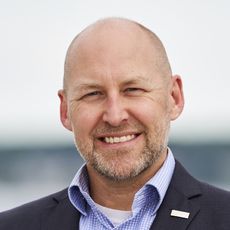
Mainebiz: How has your organization’s approach to fundraising changed during or because of the pandemic?
Matt Wolcott: United Way’s fundraising model has been heavily reliant on our workplace campaign [which entails] employees giving at their work. A big part of that has always centered around in-person engagement in many forms. The pandemic has required us to pivot and adapt to a hybrid workplace environment. This has both pros and cons, but we’re constantly coming up with new ideas with our partners and re-evaluating assumptions and strategies to maintain a presence and connect individuals with the pressing needs of our community.
MB: To what extent did your organization step up fundraising during the pandemic, and how do you keep that momentum going?
MW: We exist to serve the community by tackling the most pressing issues affecting the quality of lives. Thanks to generous support of our community, we were able to address immediate needs head-on while keeping our commitment to address the root causes of complex challenges holding people back. For example, we successfully launched a couple of special initiative funds during the pandemic, including the COVID-19 Community Relief Fund and the Racial Equity Fund which, thanks to our amazing supporters, resulted in a combined $898,000 invested back in the local community.
MB: Any new or upcoming fundraising initiatives planned for 2022?
MW: We’re growing our focus on catalyzing collaborative work in the community. From our unique vantage point of working closely with more than 300 cross-sector partners, we’re able to see where some of the greatest gaps and opportunities exist, and the partners who can come together to have a meaningful impact without duplicating efforts. United Way is bringing leadership, support, and fundraising efforts to launch or expand this work. Our strategic plan is guiding efforts to look into launching “microfunds,” which are time-bound, focused fundraising efforts designed to address acute and urgent needs in local communities.
MB: Your outlook for the fundraising climate in general?
MW: The near term will be a mixed bag. Consumer confidence, inflation, midterm elections and global disruptions like the war in Ukraine are going to make this year a challenging one for many nonprofits in general. This starts with their ability to rise above the din and distraction across communication channels to effectively engage constituents. Though, like any business model, having some diversification in resource generation will be very important. I expect corporate support and major gift philanthropy to be less prone to the headwinds of the markets and inflation than individual giving.
Kate O’Halloran: Executive Director, LifeFlight Foundation
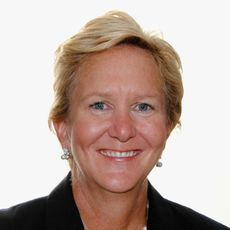
Mainebiz: How has your organization’s approach to fundraising changed during or because of the pandemic?
Kate O’Halloran: We shared stories and information based upon LifeFlight’s unique perspective on the pandemic, which people seemed eager to hear. We used this moment in time to educate new and existing donors about the importance of our mission and why that should matter. We will keep doing that. We made it personal by sharing stories of patients and our crew, who sacrificed an enormous amount to be on the front line, taking care of Maine’s most vulnerable patients.
MB: To what extent did your organization step up fundraising during the pandemic, and how do you keep that momentum going?
KO: We stayed connected with donors through personalized outreach and regular communications, but not being able to meet with donors in person was tough. We did create and deliver one major virtual event, which was a great catalyst for us to generate some compelling new video content which we will continue to do. We also gained new donors in the past two years, so we are thinking about creative ways to make sure they stay with us for years to come.
MB: Any new or upcoming fundraising initiatives planned for 2022?
KO: LifeFlight of Maine will celebrate 25 years of service in 2023, so we are using the next six months to convene a group of leaders to discuss the future needs of healthcare in Maine and to develop a significant capital campaign designed to help LifeFlight meet those needs. Additionally, we plan to launch a formal, multi-faceted Grateful Patient Program in fall 2022 and a formal Planned Giving program in spring 2023. We will seek participant feedback as we continue to adjust our primary fundraising event, the Cross For LifeFlight, within what continues to be a complex and dynamic athletic event space. We will continue to explore ways to expand and personalize our donor stewardship efforts – we want to make sure that every donor feels valued and appreciated and understands the importance and impact of their giving.
MB: Your outlook for the fundraising climate in general?
KO: Energized and optimistic. Mainers are among the most philanthropic people in the world, and they have always been willing to lend a hand to those in need, so organizations that can clearly demonstrate that need will likely benefit.
Daryl Cady, CEO of Hospice of Southern Maine
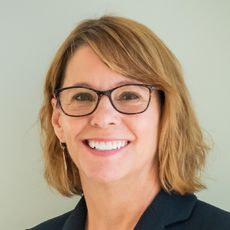
Mainebiz: How has your organization’s approach to fundraising changed during or because of the pandemic?
Daryl Cady: Hospice of Southern Maine switched to virtual events immediately. Our in-person meetings became phone calls and occasional Zoom meetings. Our donor communications became more personal, as well as transparent about our immediate needs. By personal, I mean we checked in more with our donors by phone, asked, ‘How are you doing?’ and really meant it. Interactions became less transactional and more supportive and personal in nature. We also had an increase in people, like our development committee members and board, reaching out more regularly.
MB: Have you returned to in-person fundraisers or are there pluses to being remote?
DC: This fall we’ll be offering our first in-person fundraising events since fall 2019. There are definitely pluses to keeping some virtual event capabilities, but it depends on the event. Our big indoor community conference with keynote speakers and panels, for example, is well-suited to being virtual, and we will probably continue to have a virtual option even once we return to in-person conferences and meetings. However, our outdoor, activity-oriented events are more challenging (and labor-intensive) to shift to virtual. For example, our Hike for Hospice walk was virtual the past two years and people walked where and when they wanted. We got lots of photos and created social media engagement, but the energy and esprit de corps that comes from doing things together physically were missing.
MB: Any new or upcoming fundraising initiatives planned for 2022?
DC: This year is the 15th anniversary of our Gosnell Memorial Hospice House, and we have a special campaign underway to raise funds for needed capital improvements and patient equipment. We’re also hoping to revisit an idea we tried to get started in 2020 for a women’s philanthropy luncheon to support our planned giving program. This type of gathering works best in person. The initial in-person gatherings scheduled in 2020 were canceled due to COVID. They were rescheduled as outdoor luncheons in 2021 thinking that would be safe, but those were eventually canceled as well because of the highly transmissible Delta variant. We are hoping to try again in 2022.
MB: Your outlook for the fundraising climate in general?
DC: Very positive.








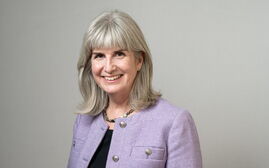
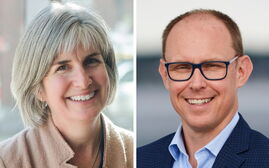




0 Comments